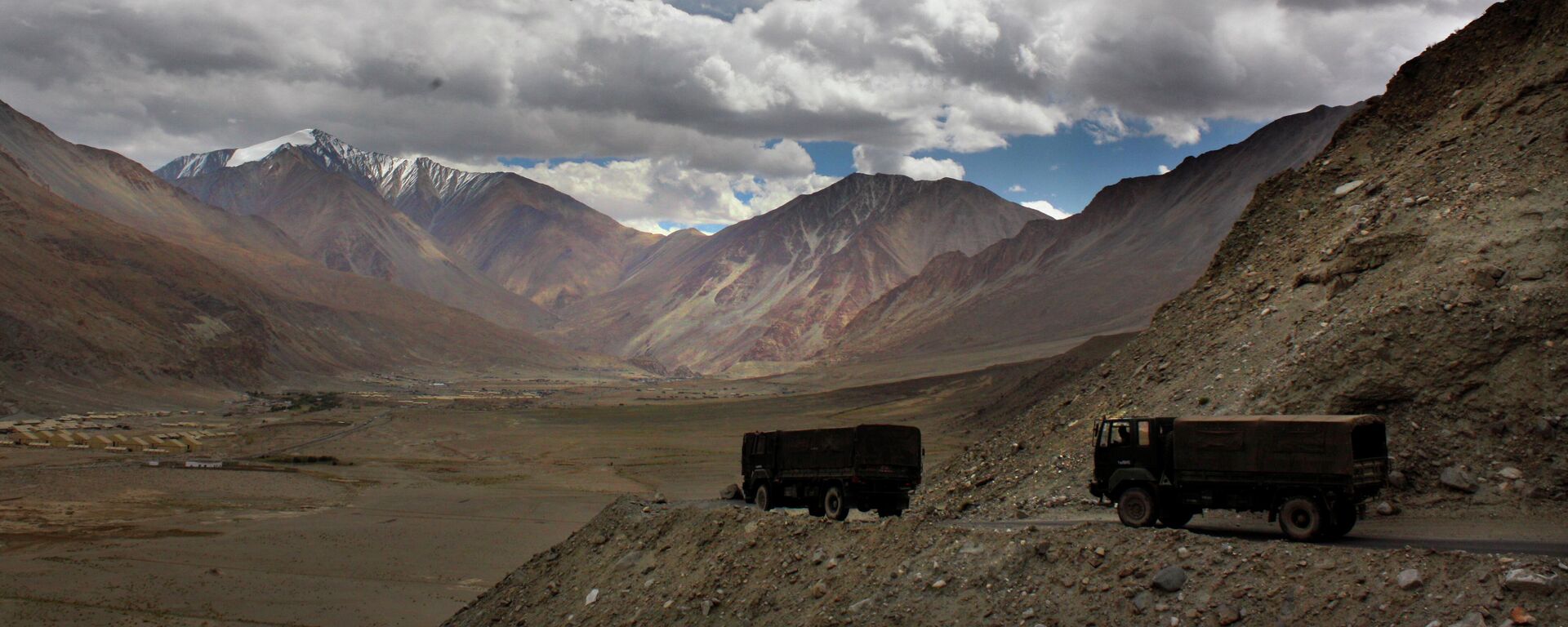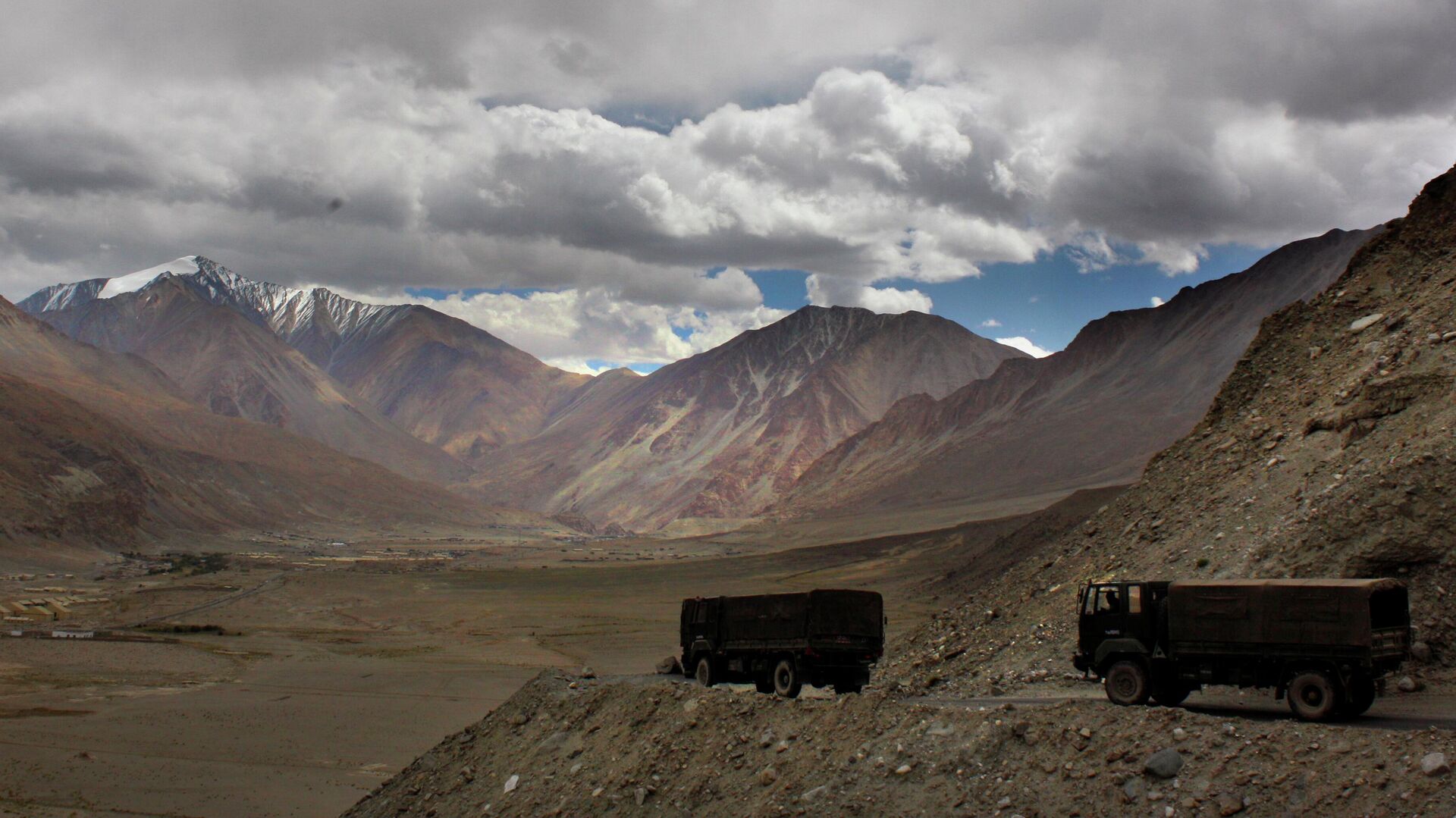https://sputnikglobe.com/20241022/india-china-complete-disengagement-in-border-region-of-ladakh--indian-foreign-minister-1120631594.html
India, China Complete Disengagement in Border Region of Ladakh – Indian Foreign Minister
India, China Complete Disengagement in Border Region of Ladakh – Indian Foreign Minister
Sputnik International
India and China have completed the disengagement of troops in the disputed border region of Ladakh, Indian Foreign Minister Subrahmanyam Jaishankar said on Tuesday.
2024-10-22T07:21+0000
2024-10-22T07:21+0000
2024-10-22T07:21+0000
asia
india
china
beijing
new delhi
ladakh standoff
border
https://cdn1.img.sputnikglobe.com/img/07e6/06/1b/1096699816_394:0:4035:2048_1920x0_80_0_0_972c5a403607ae0105e6286be6b56f31.jpg
"We reached an agreement on patrolling and ... [go back to the 2020 situation] ... We can say with that the disengagement process with China ... has been completed," Jaishankar said, as broadcast by the NDTV channel.The two nations have thousands of square kilometers of disputed borderlands between them, from the Ladakh region, which is triangulated with Pakistan's Kashmir claims, all the way to Arunachal Pradesh to the east of Bhutan. Border conflicts are a permanent fixture of India-China relations, as the countries do not have a marked border but rather the Line of Actual Control, created after the 1962 border war between the nations.The tensions in Ladakh between China and India escalated in May 2020. Following several conflicts between the countries’ military units in the area of Pangong Lake, Beijing prompted New Delhi to increase its military presence on the border.In an attempt to reduce tensions, New Delhi and Beijing launched disengagement consultations in early June 2020, with the first phase of disengagement on the northern and southern banks of Pangong Lake completed in February 2021. Since 2020, 16 rounds of talks have taken place, yielding mixed results.
https://sputnikglobe.com/20220909/expert-explains-what-prompts-india--china-to-resolve-two-year-long-border-standoff-in-ladakh-1100603405.html
china
beijing
new delhi
ladakh standoff
Sputnik International
feedback@sputniknews.com
+74956456601
MIA „Rossiya Segodnya“
2024
Sputnik International
feedback@sputniknews.com
+74956456601
MIA „Rossiya Segodnya“
News
en_EN
Sputnik International
feedback@sputniknews.com
+74956456601
MIA „Rossiya Segodnya“
Sputnik International
feedback@sputniknews.com
+74956456601
MIA „Rossiya Segodnya“
india, china complete disengagement, border region of ladakh, indian foreign minister subrahmanyam jaishankar
india, china complete disengagement, border region of ladakh, indian foreign minister subrahmanyam jaishankar
India, China Complete Disengagement in Border Region of Ladakh – Indian Foreign Minister
NEW DELHI (Sputnik) - India and China have completed the disengagement of troops in the disputed border region of Ladakh, Indian Foreign Minister Subrahmanyam Jaishankar said on Tuesday.
"We reached an agreement on patrolling and ... [go back to the 2020 situation] ... We can say with that the disengagement process with China ... has been completed," Jaishankar said, as broadcast by the NDTV channel.
The two nations have thousands of square kilometers of disputed borderlands between them, from the
Ladakh region, which is triangulated with Pakistan's Kashmir claims, all the way to Arunachal Pradesh to the east of Bhutan. Border conflicts are a permanent fixture of India-China relations, as the countries do not have a marked border but rather the Line of Actual Control, created after the 1962 border war between the nations.

9 September 2022, 17:33 GMT
The tensions in Ladakh between China and India escalated in May 2020. Following several conflicts between the countries’ military units in the area of Pangong Lake, Beijing prompted New Delhi to increase its military presence on the border.
In an attempt to reduce tensions, New Delhi and Beijing launched disengagement consultations in early June 2020, with the first phase of disengagement on the northern and southern banks of Pangong Lake completed in February 2021. Since 2020, 16 rounds of talks have taken place, yielding mixed results.





